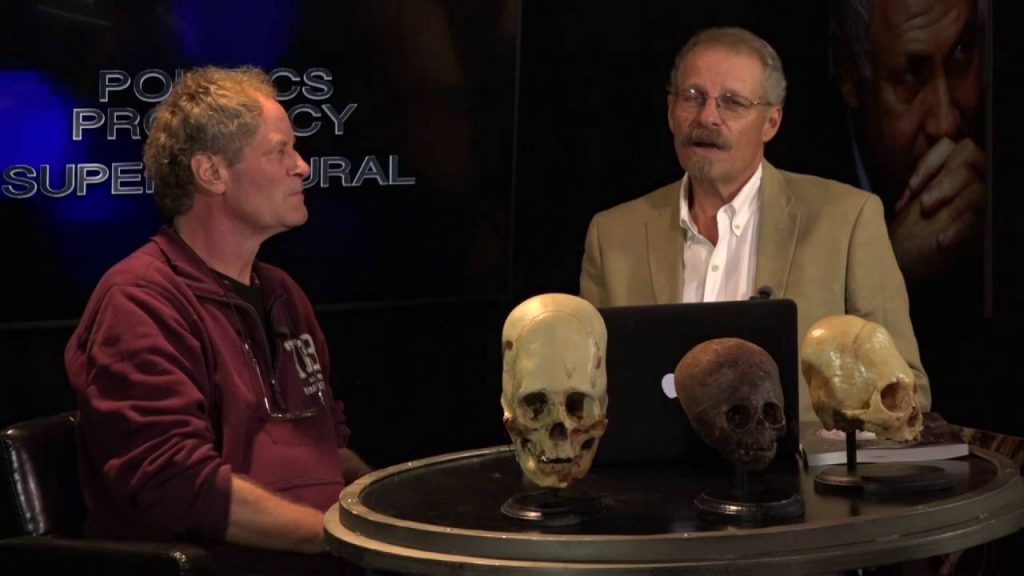Brien Foerster joins LA Marzulli’s Prophecy and the Supernatural Report. As some may already know, Foerster is the co-author of the book, ‘Lost Ancient Technology of Peru and Bolivia’, as well as a curator at the Paracas History Museum in Paracas Peru, a city to the south of that country’s capital of Lima. The museum has dozens of well-preserved skulls, which are super elongated, have a 25% larger brain capacity and 60% higher bone density than that of Homo sapiens sapiens, as well as possessing just one parietal plate, instead of the two present in human skulls. These red-haired skulls have had their DNA partially analyzed and so far, the mitochondrial DNA shows many mutations not present in any life form on Earth. Similar skulls have been found all over the world, including in Russia, Malta, France and at the site of Stonehenge in Britain. There is a high correspondence between megalithic sites and the nearby presence of elongated skulls. The oral history of the people of Easter Island, 600 miles off the Pacific coast of Peru is that their ancestors were tall redheads with elongated skulls. Some of the “Moai” or statues still retain large red hewn stones on their heads, which are said to represent their red hair.
No “serious” paleontologist has taken on the study of these skulls, so Foerster has taken this task upon himself, raising the large sums of money on his own needed to perform DNA analyses of several different skulls, including their hair and teeth.
Foerster also gives tours in the Cuzco area of Peru, which was once the capital of the Inca Empire and where the architecture is fascinating because the lower levels are made from basalt polygonal megaliths, followed by Inca-era adobe, and topped with Spanish Colonial construction.
The basalt layer is always referred to as the “Inca” level but this does not seem possible, as they had Bronze age technology (at best) and that basalt is much harder than bronze. Moreover, these curved, megalithic stones, weighing sometimes 40 tons are held together without any mortar and with virtually no microns of space between them and even modern stone masons say that the complexity of the work is beyond what they can do today.
I’ve seen these walls myself and they are a complete jaw-dropping mystery. Flying over the Andes in Peru, you see dozens of Macchu Picchus covered with snow at elevations of 20,000+ feet, which are virtually impossible to excavate unless a whole archeological crew, prepared to make camp in Arctic temperatures and at a very high altitude were to capable of rappelling out of a super robust helicopter with all of their equipment.
Foerster expresses his opinion that archeologists need to be more interdisciplinary before propounding their conclusions that these megalithic constructions are of Inca origin. He’s quite certain that the megaliths of Peru and Bolivia were constructed by a much more ancient and technologically sophisticated civilization than the one from 1,000-500 years ago.
The local oral traditions among the indigenous people of Peru includes stories of a previous race of man that was much taller and which was destroyed by God for being so “stupid”. This has similarities with Maya and Hopi mythologies and of course with Biblical descriptions of antediluvians giants.
All of this does point to a previous epoch of humankind. When I think of Atlantis, I think more about an era than an actual place because there are many indications that whatever preceded this round of civilization was global in nature, anyway.

